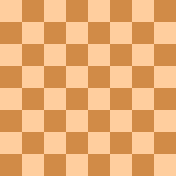French defence facts for kids
The French Defence is a popular way to start a chess game. It's a special opening where Black (the player with the black pieces) responds to White's first move (1.e4) with 1...e6. It's one of the most common ways players choose to begin a game.
Often, Black tries to make things happen on the left side of the board (the queenside), while White focuses on the right side (the kingside). One challenge for Black in the French Defence is getting their light-squared bishop (the one that starts on a white square) into the game. However, this opening is known for being very solid and reliable. Many great chess players, like Botvinnik, have used it. It has even appeared in several world championship matches!
Here are some common ways the French Defence can play out:
Tarrasch Variation
This variation often starts with the moves: 1.e4 e6 2.d4 d5 3.Nd2. After this, Black might play 3...c5 or 3...Nf6. A typical game continues with 4.exd5 exd5 5.Nf3 Nc6 6.Bb5 Bd6 7.dxc5 Bxc5 8.0-0 Ne7.
This line is usually calmer and focuses on controlling the center of the board. Both sides try to build a strong position without too many early attacks.
Winawer Variation
The Winawer Variation is known for being more exciting and aggressive. It usually starts with: 1.e4 e6 2.d4 d5 3.Nc3 Bb4. White then often plays 4.e5, pushing their pawn forward. A common sequence follows: 5.a3 Bxc3+ 6.bxc3 Ne7 7.Qg4. Black might respond with 7...Qc7 or 7...0-0 (castling).
In this variation, the game often becomes very different for each side. White usually tries to attack on the kingside (where the kings often castle), while Black focuses on attacking on the queenside.
| a | b | c | d | e | f | g | h | ||
| 8 |

|
8 | |||||||
| 7 | 7 | ||||||||
| 6 | 6 | ||||||||
| 5 | 5 | ||||||||
| 4 | 4 | ||||||||
| 3 | 3 | ||||||||
| 2 | 2 | ||||||||
| 1 | 1 | ||||||||
| a | b | c | d | e | f | g | h | ||
See also
 In Spanish: Defensa francesa para niños
In Spanish: Defensa francesa para niños

